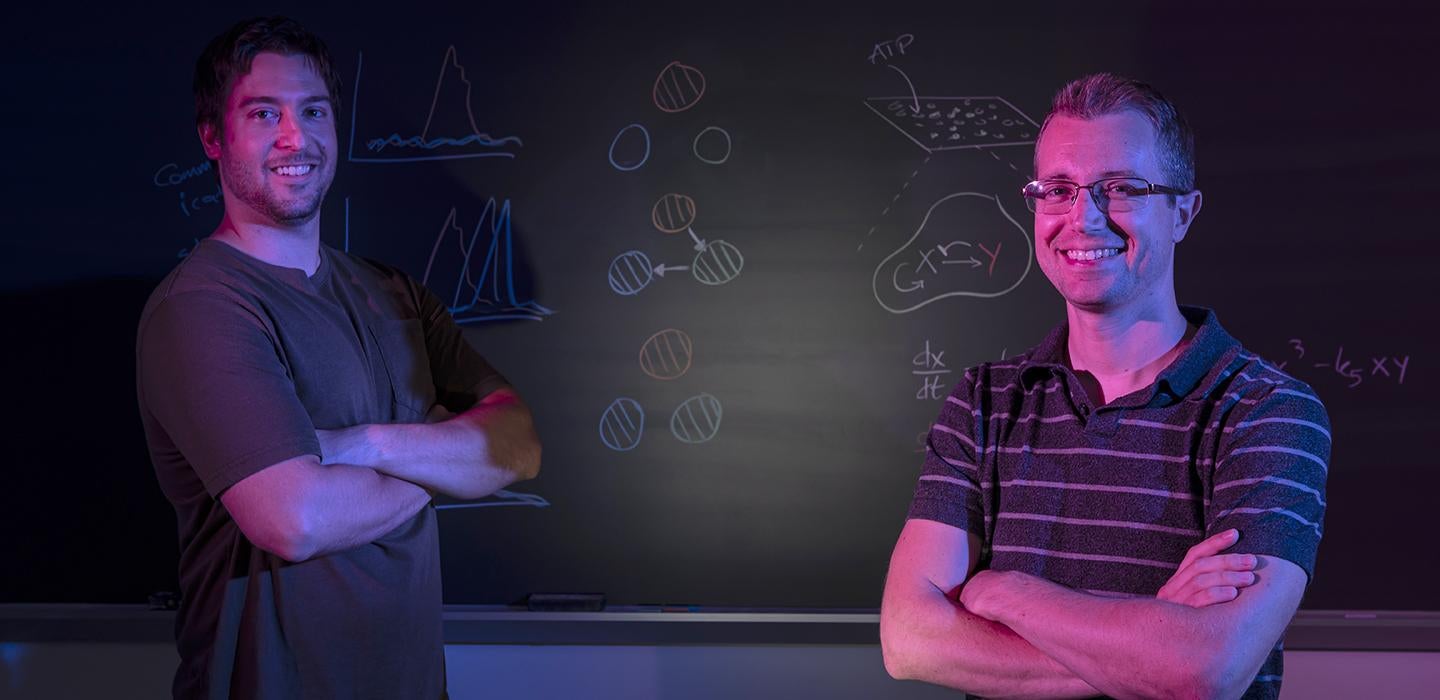
Subscribe to Pittwire Today
Get the most interesting and important stories from the University of Pittsburgh.Teams need to talk to each other to work together, but for the tiniest cooperators, too much communication may not be a good thing. New research from a group including Pitt physicists shows that both too little and too much communication can hinder how cells respond to their environment. The results may have implications for understanding how groups of cells, from collections of amoeba to the those that govern the rhythm of your heart, unite to get jobs done.
“Cells need to work together to perform complex tasks — that can include synchronizing together, performing a function all at once,” said Ryan Lefebre (pictured left), co-lead author of the paper and a physics PhD student in the Kenneth P. Dietrich School of Arts and Sciences. “You would think that the better they can communicate with each other, the more they’d become more synchronized. But that’s not quite true.”
While scientists have extensively studied the way some types of brain cells learn as a group, the same isn’t true of cells that lack the ability to make complex, specialized connections to one another. And yet in many cases, even these simpler cells manage to coordinate in response to their environment.
To study this coordination, Pitt researchers worked with colleagues at Oregon State University to put together a simplified system where they could study a kind of brain cell that communicates with chemicals in a simpler way, resembling single-celled organisms and the cells that make up the rest of our bodies.
Sketching out how the network of these cells behave revealed an optimal amount of communication — not too much, and not too little — that lets them respond to their environment together. The team published their results in the journal Proceedings of the National Academy of Sciences on Sept. 6.
The researchers were initially perplexed by the experiment’s results, said co-author Andrew Mugler (pictured right), a physics associate professor in the Dietrich School and Lefebre’s advisor.
“We didn’t understand what we were seeing until we actually wrote down a mathematical model. Then we could drill down and say, ‘Let’s just take two cells,’” Mugler said. Scaling up that simplified model led the team to understand how interactions between individual cells produced the larger-scale patterns of the network.
Changing the speed of fluctuations in the cell network’s environment also influenced how well the cells could respond: If the environment changes too quickly, the cells can’t coordinate effectively.
Key to the team’s experimental setup are cells from a part of the brain that’s important in reproduction and metabolism, and that react to a chemical called ATP by releasing calcium into their environment. Researchers were able to change the experiment to alter how effectively the cells passed around chemical messages and used statistics to show which cells act as “leaders” and “followers” at a given time.
The system, Mugler explained, is typical of those favored by biological physicists like his team: It’s lifelike enough to resemble natural cell networks but simple enough to be manipulated, studied and described using math. “It’s a sandbox for the collective behavior of cells,” Mugler said. “We can wrap our heads around it, and we can control it.”
While this is an early step in understanding how networks of cells respond to their environment collectively, building that understanding may provide insight into a number of diseases, including cancer. “A lot of times when we get a malfunction in tissues, it comes from a lack of coordination between cells,” Mugler said. “In tumor growth and metastasis, cells stop being a member of the team and acquire a more individualistic, less coordinated nature.”
Next, the team is working on modeling more complex networks of cells by placing neurons in randomly generated mazes, bringing into reality ideas from a branch of statistics called percolation theory.
“I think it’s going to produce some pretty cool results,” Mugler said.
— Patrick Monahan, photography by Aimee Obidzinski


